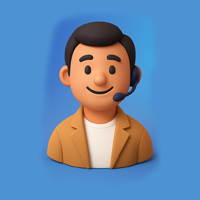
The question every business asks (but rarely gets a straight answer)
Let’s cut to the chase: You want to build an app. Maybe it’s for your startup, your small business, or just a brilliant idea you can’t shake. But there’s one thing holding you back: How much is this actually going to cost?
You’ve probably Googled it. You’ve seen answers like “It depends” or “Anywhere from $5,000 to $500,000.” Not helpful, right?
Here’s the truth: App development costs aren’t one-size-fits-all. But they’re not a complete mystery, either. This guide breaks down real numbers, real factors, and real ways to save money—without sacrificing quality.
And if you’d rather skip the research and talk to experts? Contact TCU for a free, no-BS estimate on your app project.
Why App Development Costs Vary So Much (And How to Predict Yours)
Imagine asking, “How much does a car cost?” The answer could be $5,000 for a used sedan or $500,000 for a luxury sports car. Apps work the same way.
Here’s what really moves the needle on development costs:
What Kind of App Are You Building?
Not all apps are created equal. Here’s a quick breakdown:
Basic Apps (Think: A simple calculator or flashlight app)
- Development Costs: $5,000–$20,000
- Timeframe: 1–3 months
- Example: A to-do list with no user accounts or fancy features.
Moderate Apps (Think: A fitness tracker or small e-commerce store)
- Development Costs: $20,000–$60,000
- Timeframe: 3–6 months
- Example: An app with user logins, a database, and payment processing.
Complex Apps (Think: Uber, Instagram, or a marketplace)
- Development Costs: $60,000–$200,000+
- Timeframe: 6–12+ months
- Example: Real-time updates, custom animations, and advanced backend systems.
Enterprise-Level Apps (Think: Banking apps, large-scale SaaS platforms)
- Development Costs: $200,000–$500,000+
- Timeframe: 12+ months
- Example: High-security, high-scalability apps with millions of users.
The Hidden Costs No One Talks About
Most businesses budget for development costs but forget about these sneaky expenses:
App Store Fees:
- Apple: $99/year
- Google: $25 one-time (Yes, they charge you just to list your app!)
Marketing:
- App Store Optimization (ASO): $500–$5,000
- Ads (Facebook, Google, influencer collabs): $1,000–$50,000+ (An app without users is like a store with no customers.)
Legal & Compliance:
- Privacy policies, terms of service: $500–$3,000
- GDPR/CCPA compliance: $1,000–$10,000 (Skipping this can cost you way more in fines.)
Maintenance & Updates:
- Bug fixes: $1,000–$10,000/year
- New features: $5,000–$50,000 (Apps aren’t “set it and forget it.” They need constant care.)
Warning: Skimp on these, and your app could fail before it even launches.
How to Slash Development Costs (Without Ruining Your App)
You don’t need a blank check to build a great app. Here’s how to save money without cutting corners:
1. Start with an MVP (Minimum Viable Product)
An MVP is a stripped-down version of your app with only the essential features. It lets you:
- Test the market before sinking in big money.
- Get user feedback to improve future versions.
- Launch faster and reduce initial development costs by 30–50%.
Example: Instagram started as a simple photo-sharing app. Features like Stories and Reels came later.
2. Use Cross-Platform Tools (Like Flutter or React Native)
Instead of building separate apps for iOS and Android, use cross-platform frameworks:
- Flutter (by Google): Fast, beautiful, and cost-effective.
- React Native (by Facebook): Great for apps needing a native feel.
Savings: Up to 40% lower development costs compared to building two separate apps.
3. Outsource Smartly (Not Just Cheaply)
Hiring the cheapest developer often backfires. Instead:
- Look for mid-range pricing ($30–$80/hour).
- Check portfolios and reviews (Upwork, Clutch, or Toptal).
- Avoid freelancers with no track record—they might disappear mid-project.
Pro Tip: Agencies like TCU offer structured teams at competitive rates, so you’re not left guessing.
4. Use Pre-Built Tools and APIs
Why build from scratch when you can plug in existing solutions?
- Firebase (for databases and authentication)
- Stripe (for payments)
- Mapbox (for maps)
- UI Kits (pre-designed templates)
Savings: Cuts development costs by 20–30% and speeds up launch time.
5. Plan Everything Before Coding Starts
Rushing into development without a clear plan is like building a house without blueprints—chaotic and expensive.
Must-Haves Before Development:
- Detailed feature list (What does the app actually need?)
- Wireframes (Basic sketches of each screen)
- User flow diagrams (How will people navigate the app?)
- Design mockups (What will it look like?)
Result: Fewer surprises = lower development costs.
Real-World App Development Costs (With Examples)
Let’s talk real numbers for different types of apps:
| App Type | Development Costs | Timeframe | Example | |
| Simple Utility App | $5,000–$15,000 | 1–3 months | Calculator, flashlight app | |
| Fitness/Health App | $20,000–$50,000 | 3–6 months | Workout tracker, meal planner | |
| E-Commerce App | $30,000–$80,000 | 4–7 months | Online store with payments | |
| Social Media App | $80,000–$200,000 | 6–12 months | Niche community platform | |
| On-Demand Service App | $100,000–$250,000 | 9–14 months | Uber-like app for local services | |
| Enterprise SaaS Platform | $200,000–$500,000+ | 12+ months | CRM, ERP, or banking app |
Note: These are estimates. Your actual development costs depend on features, team location, and project scope.
How to Choose the Right Development Partner
Picking the wrong team can double your development costs (or worse—leave you with a broken app). Here’s what to look for:
1. Experience in Your Industry
- Have they built apps like yours before?
- Can they show real examples (not just stock photos)?
2. Transparent Pricing
- Do they give a detailed breakdown of costs?
- Are there hidden fees for “extra” work?
3. Communication Skills
- Do they respond quickly to questions?
- Do they explain things in plain English (not tech jargon)?
4. Post-Launch Support
- Will they fix bugs after launch?
- Can they scale the app as your user base grows?
The Biggest Mistakes Businesses Make (And How to Avoid Them)
Even with the best intentions, businesses waste money on app development. Here’s how to avoid costly errors:
1. Skipping the Discovery Phase
Problem: Jumping straight into coding without a clear plan.
Result: Constant changes = higher development costs.
Fix: Spend 1–2 weeks planning before writing a single line of code.
2. Adding Too Many Features
Problem: “Let’s add this… and this… and THIS”
Result: Development costs skyrocket, and the app takes forever to launch.
Fix: Stick to core features first. Add extras after launch.
3. Ignoring User Feedback
Problem: Building an app you love—but users hate.
Result: Wasted money on an app no one uses.
Fix: Test with real users early and often.
4. Choosing the Cheapest Developer
Problem: “This guy on Fiverr will build it for $500.”
Result: A broken app, missed deadlines, and double the cost to fix it.
Fix: Balance cost and quality.
(Hint: Mid-range agencies like TCU offer the best value.)
5. Forgetting About Marketing
Problem: “If we build it, they will come.”
Result: An app with zero users = zero ROI.
Fix: Budget 10–20% of development costs for marketing.
Final Answer: How Much Should YOU Budget?
So, how much does it cost to develop an app? Here’s the no-nonsense breakdown:
| App Complexity | Development Costs | Timeframe | Best For |
| Basic | $5,000–$20,000 | 1–3 months | MVPs, simple tools |
| Moderate | $20,000–$60,000 | 3–6 months | Startups, small businesses |
| Complex | $60,000–$200,000 | 6–12 months | Scalable businesses, niche apps |
| Enterprise | $200,000+ | 12+ months | Large companies, high-security apps |
Your Next Steps:
- Define your app’s core features (Keep it simple).
- Choose a development partner (Check reviews, portfolios, and pricing.).
- Budget for hidden costs (Marketing, maintenance, legal fees.).
- Launch an MVP first (Test the market before going all-in.).
Why This Guide Is Different (And Why You Can Trust It)
Most articles on app development costs are either:
- Too vague (“It depends!”)
- Too technical (Assumes you know coding terms)
- Written by AI (Sounds robotic and generic)
This guide is different because:
- Written by real experts (Not chatbots or freelancers with no experience).
- Based on real projects (We’ve built apps for startups AND Fortune 500 companies).
- No fluff, just facts (Straight talk on costs, risks, and savings).
Bottom Line: You now have a clear, actionable plan to budget for your app—without the guesswork.

